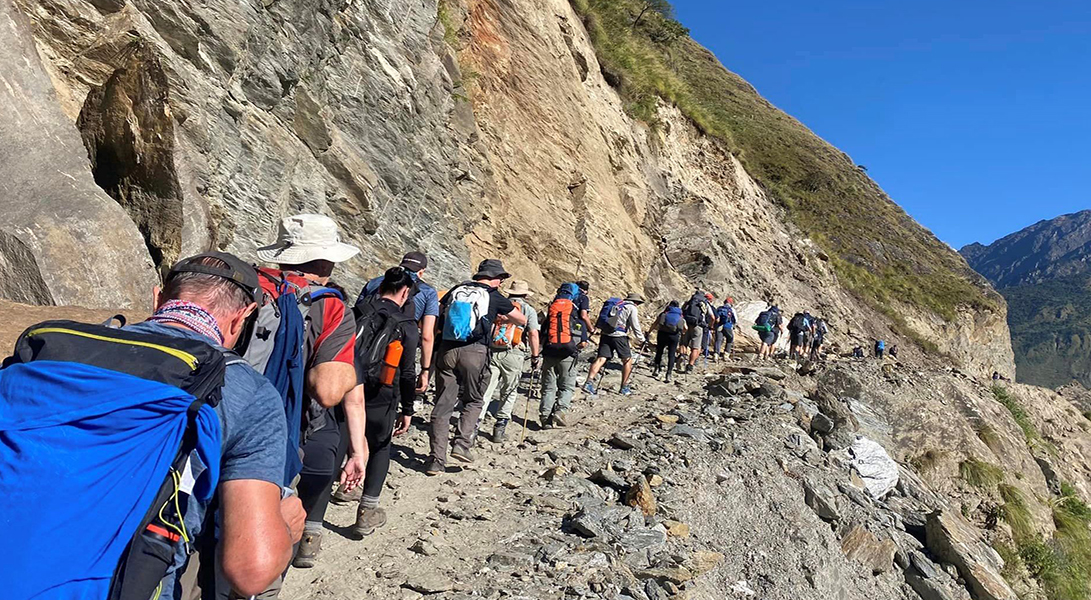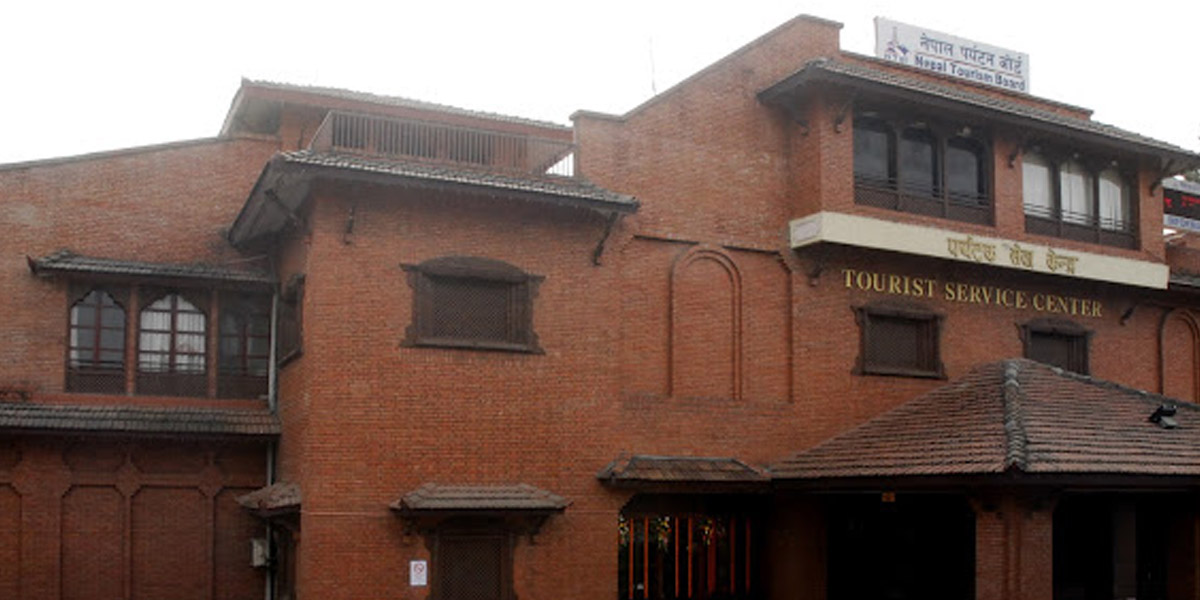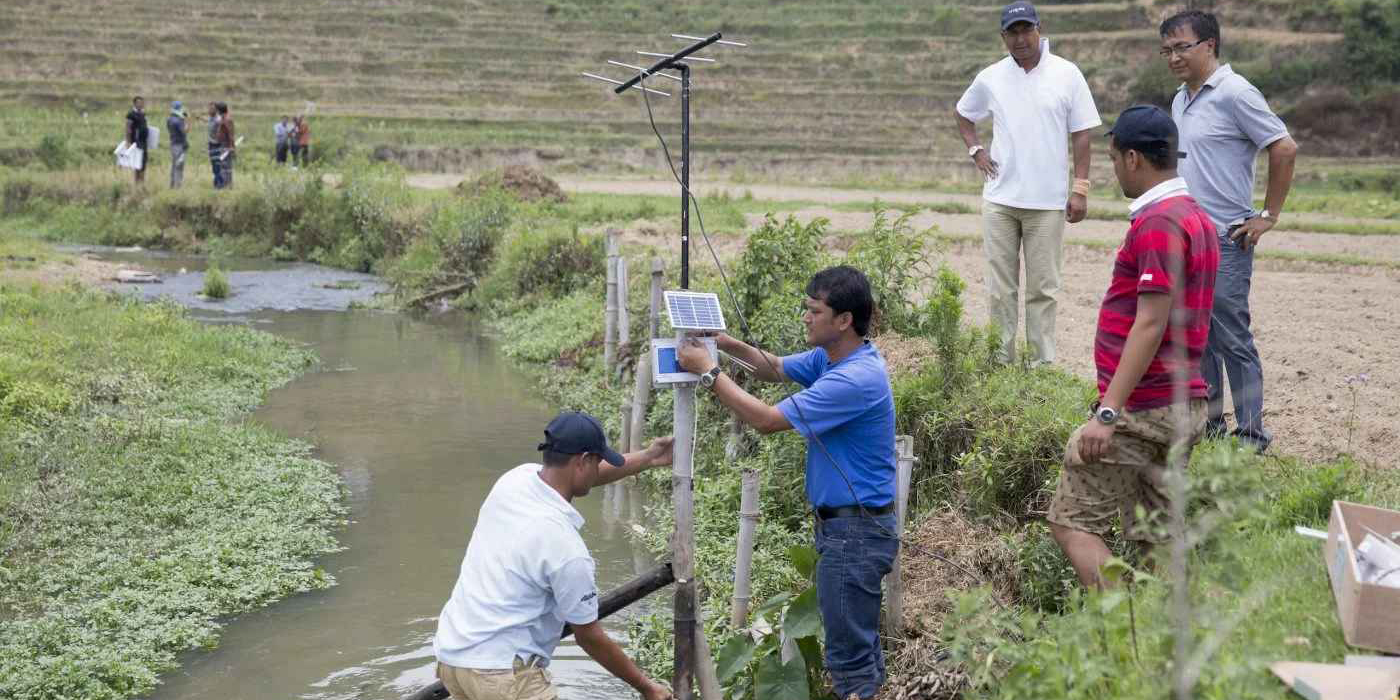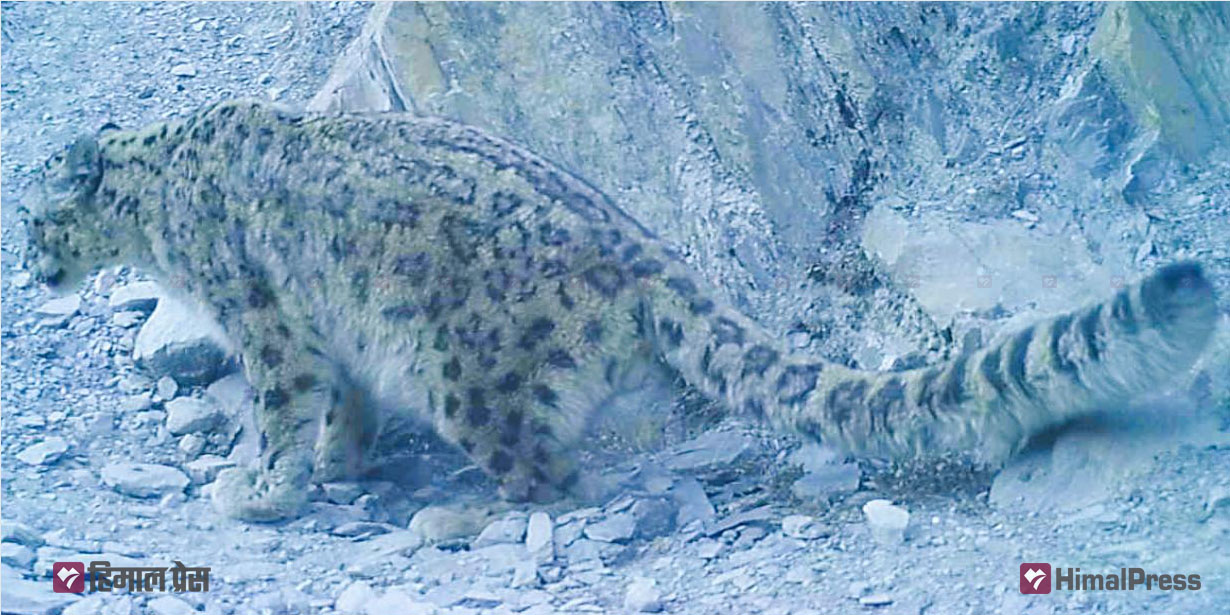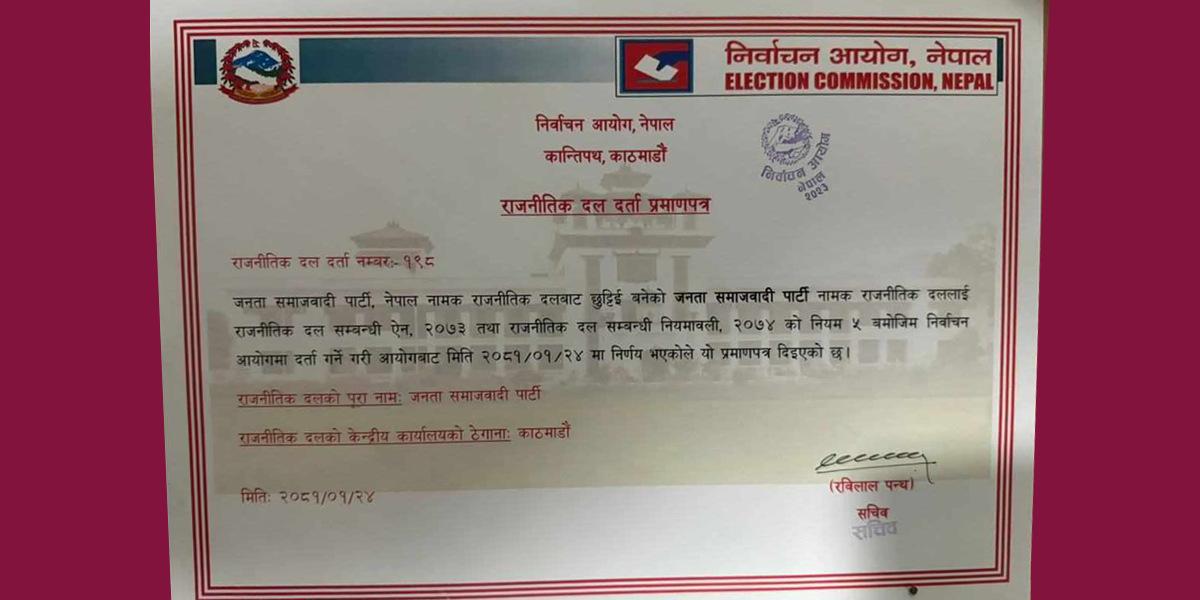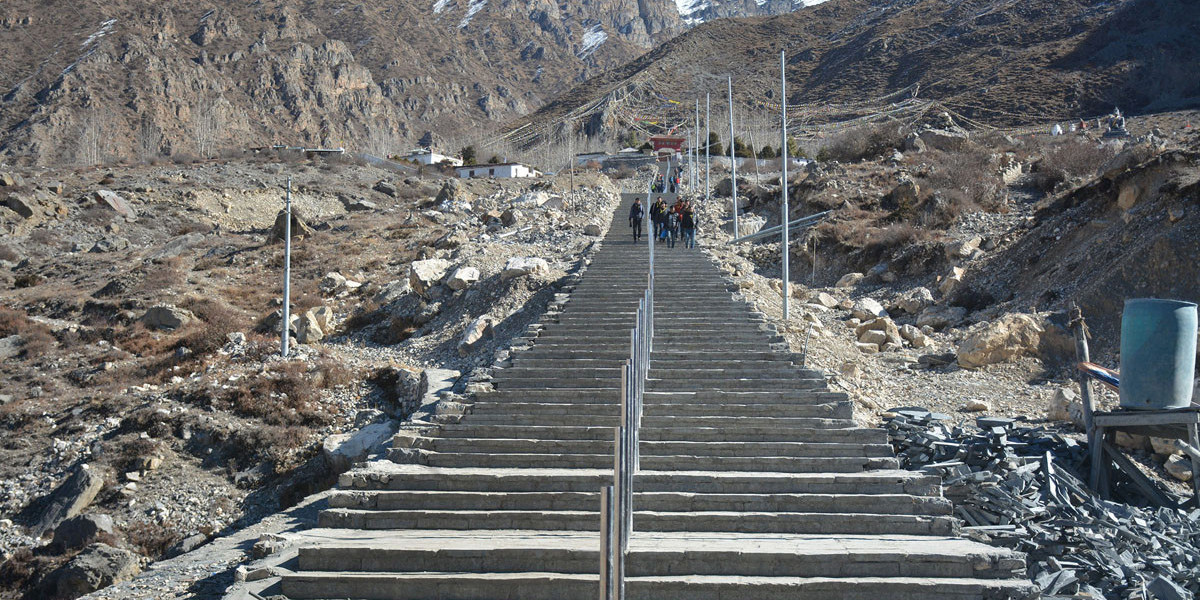 Concerete stairs to the popular Muktinath Temple in Mustang. Photo: RSS
Concerete stairs to the popular Muktinath Temple in Mustang. Photo: RSS
KATHMANDU: The Annapurna Circuit Trail stands as the foremost choice among foreign trekkers visiting Nepal. This renowned trail starts in Besishahar of Lamjung and ends at the sacred Muktinath in Mustang. Earlier, trekkers used to walk further down Mustang through Myagdi until Kaski. However, the Annapurna Circuit Trail, which once took up to 25 days to complete, can now be traversed in less than a week.
The shortening of trekking trails is a pressing concern in Nepal’s adventure tourism industry. The haphazard construction of roads leading to the base camps of mountains is inadvertently inviting environmental disasters. Moreover, it has disrupted the integrity of the trekking trails—a unique selling proposition (USP) for Nepal’s tourism sector. Shortening of trekking trails means a reduction in tourist’s length of stay as well as spending. This has ultimately hit the revenue of travel entrepreneurs. What is more concerning is that the natural settings of these trails are disturbed by the presence of motorable roads, leaving trekkers disappointed.
The locals and representatives of Manang have long advocated for the development of alternative trekking trails. “The need for alternative trails is evident, as most existing trails have been transformed into motorable roads. Trekkers do not come here to witness these developments,” said Gandaki Province Assembly Member Munindra Jung Gurung. “The creation of alternative trails would spare tourists from walking on those dusty roads.”
Annually, Manang welcomes between 30,000 to 40,000 foreign tourists. A majority of them are trekkers.
Dharmaraj Panti, President of the Gandaki Chapter of the Trekking Agencies’ Association of Nepal (TAAN), has noted a considerable decline in the number of trekkers on the Annapurna Circuit Trail due to road construction. “While overall tourist arrivals are gradually returning to pre-COVID levels, the Annapurna Circuit trail has seen a decrease in visitor numbers,” lamented Panthi. “This has adversely impacted lodges, guesthouses, and homestays established along the trail.”
In eastern Nepal, trekking trails from Bastantaur in Terhathum to Dobhan in Taplejung have also fallen victim to haphazard road construction. Similarly, the allure of Tinjure-Milke-Jaljale, Nepal’s largest rhododendron forest boasting 32 species of the national flower, has waned due to unplanned road development. This trail is also used by climbers heading to Makalu, Kumbhakarna, and Kanchenjunga.
Numerous small market areas along these trails have witnessed business decline as tourist numbers are dwindling. The tourism and business sectors in these regions have suffered due to the loss of existing trails.
Concrete Trails
The practice of converting trekking trails into roads is not limited to remote areas, as it has become a common sight around the Kathmandu Valley as well. For example, the once-popular hiking trail from Kirtipur to Champadevi has lost its charm after road construction by Kirtipur Municipality. Similarly, a road now links Pharping with Champadevi. This haphazard road construction has not only erased hiking trails but also exacerbated environmental issues. Soil erosion, landslides and deforestation are a common environmental problems in these areas..
The ancient trail from Matatirtha to Chandragiri Pass has now made way to a road to Chitlang of Makwanpur. Another road runs parallel to this road, about three kilometers from Matatirtha. Roads have also been constructed on hiking trails to Phulchoki and Bhattedanda in Lalitpur, among others.
Roads are seen as a first prerequisite for development as they are a stepping stone for the development of other infrastructure like electricity. Consequently, road construction remains a top priority. However, the construction of roads often overlooks environmental assessments, feasibility studies, and justifications. These prerequisites are frequently ignored during road construction in Nepal.
Nilhari Bastola, president of TAAN, lamented the disregard for preserving trekking trails and the pristine environment while constructing roads. “The tourism sector would not have suffered to this extent if roads were constructed after conducting environmental impact assessments (EIA) and considering their financial and social impacts,” said Bastola. “Unfortunately, we are not adhering to these requirements. Trekkers are leaving Nepal with negative impressions, which will further harm our industry in the days to come.”
Trekking trails are not only disappearing due to road construction. Local governments across the country are competing to replace ancient paths used for generations with concrete ones. Concrete stairs and trails are now visible on popular hiking routes such as Sundarijal-Mulkharka, Champadevi-Bhashmasur Hill, Shivapuri, Fulchoki, Jamacho, Ranikot, and many others. These concrete structures have not only stripped away the aesthetic value of the trails but have also taken a toll on the health and well-being of hikers. Walking for extended periods on uniform concrete surfaces can lead to knee and back pain, according to health professionals. These concrete trails are not just a misuse of state resources. They also reveal the government’s apathy towards nature conservation. Furthermore, they reflect the government’s inclination toward unnecessary infrastructure development in the name of tourism.
The use of concrete to replace ancient trails is detrimental to both the environment and the hiking experience. This trend of replacing natural beauty with concrete eyesores is now pervasive across the country.



